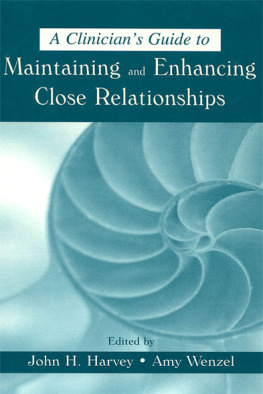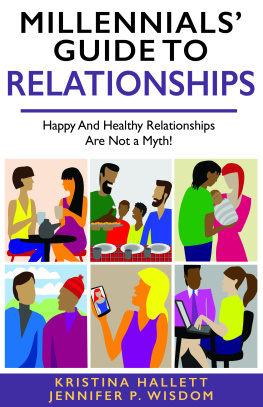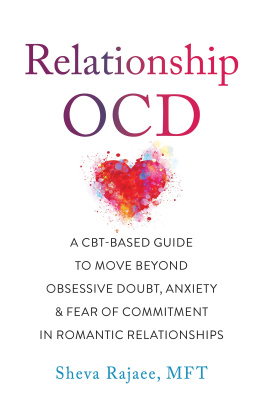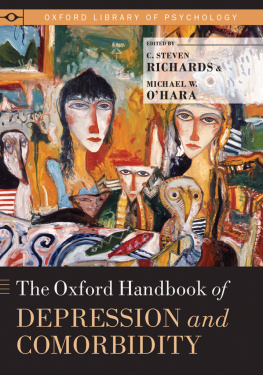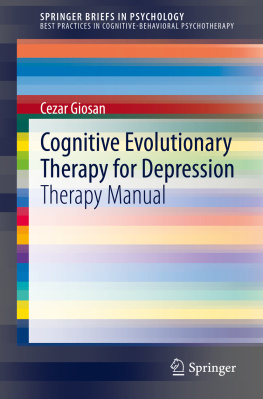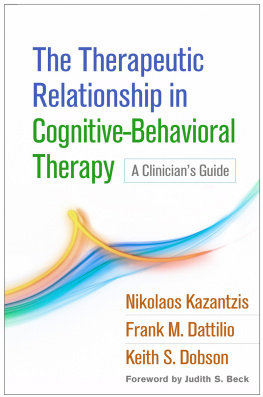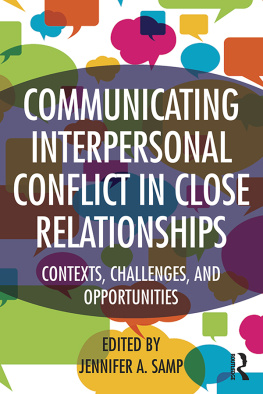Copyright 2002 by Lawrence Erlbaum Associates, Inc.
All rights reserved. No part of the book may be reproduced in any form, by photostat, microform, retrieval system, or any other means, without the prior written permission of the publisher.
Lawrence Erlbaum Associates, Inc., Publishers
10 Industrial Avenue
Mahwah, New Jersey 07430
This edition published in the Taylor & Francis e-Library, 2008.
To purchase your own copy of this or any of Taylor & Francis or Routledges collection of thousands of eBooks please go to www.eBookstore.tandf.co.uk.
Cover design by Kathryn Houghtaling Lacey
Library of Congress Cataloging-in-Publication Data
A clinicians guide to maintaining and enhancing close relationships/edited by John H. Harvey, Amy Wenzel
p. cm.
Includes bibliographical references and index.
ISBN 0-8058-3631-4 (alk. paper)ISBN 0-8058-3632-2 (pbk. : alk paper)
1. Interpersonal relations. 2. Family psychotherapy. I. Harvey, John H., 1943-II. Wenzel, Amy.
HM1 106 .C53 2001
302dc21
2001042313
ISBN 1-4106-0399-7 Master e-book ISBN
ISBN13: 978-1-4106-0399-9 Master e-book ISBN
ISBN13: 978-1-135-65668-3 ePub ISBN
Contents
Amy Wenzel and John H.Harvey |
Masahiro Masuda and Steve Duck |
Anita L.Vangelisti and Katheryn Maguire |
Leonard J.Simms |
E.Mark Cummings and Marybeth Graham |
Lawrence H.Ganong, Marilyn Coleman, and Shannon Weaver |
Sammy F.anawan, Heather A.OMahen, Steven R.H.Beach, and Melanie H.Jackson |
Karin E.Larsen and Michael W.OHara |
Lydia C.Jackson and Amy Wenzel |
Amy Wenzel |
Sara L.Dolan and Peter E.Nathan |
Natalie D.Monarch, Scott G.Hartman, Sarah W.Whitton, and Howard J.Markman |
Douglas K.Snyder |
Frank D.Fincham and Steven R.H.Beach |
Pepper Schwartz |
Len Sperry |
Maintaining and Enhancing Close Relationships: Linking Theory With Practice
Amy Wenzel
University of North Dakota
John H.Harvey
University of lowa
In the past 10 years, we have witnessed a substantial increase in the number of theoretical and empirical investigations into the maintenance and enhancement of close, romantic relationships. Rather than focusing on how relationships form or dissolve, this literature attempts to track the course of relationships over time. Further, rather than considering how unique or stressful life circumstances enhance or disrupt relationships, this literature targets the everyday behaviors, expressions of love, and cognitive styles that characterize successful long-term romantic relationships. To date, this line of research generally has been conducted in the realm of social psychology and communications studies. We felt it important to bring this approach to practitioners who treat couples in distressed relationships. It is our hope that this volume will provide insight into ways clinicians and patients can work collaboratively to enhance relationships rather than only to prevent further deterioration.
In a companion volume to this one (Close Relationships: Maintenance and Enhancement), a number of distinguished scholars outlined theories and applications of the manner in which close relationships are maintained and enhanced. Several themes that might be useful to clinicians emerged from that compilation. For example, Mills and Clark (2001) put forth a view of close relationships as those that are communal in nature. That is, close relationships will be successful to the extent that individuals meet the needs of their partner without expecting a benefit in return. Mills and Clark believe that communal behaviors result in both members of the dyad feeling cared for by the other. Although such an approach might be difficult to explore with distressed couples early in therapy, it is an approach that might be useful to consider after acute conflict subsides. Using this theory as a foundation, clinicians might work with couples to identify instances of communal behaviors, explore the positive affect associated with being on the giving and receiving end of a communal exchange, and monitor relationship satisfaction as a function of the extent to which a couple adopts this orientation.
According to a theory by Rusbult, Olsen, Davis, and Hannon (2001), commitment, rather than satisfaction or investment, is the strongest predictor of relationship persistence. They regard commitment as having three components-intention to persist, psychological attachment, and a cognitive orientation to being in the relationship for the long term. Many couple interventions include components that focus on these cognitive and affective dimensions. Rusbult and her colleagues base their work on an interdependence theory; the key to that theory is that many situations arise in relationships in which the immediate well being of one person is incompatible with the immediate well being of the partner and relationship (p. 88). They suggest that relationship distress might be related to problematic interdependence situations just as much as to individual variables, such as poor social skills or a blaming attributional style. Thus, they call for couple therapists to modify the problematic interdependence structure as well as attend to individual variables that interfere with relationship functioning.
Specific recommendations for the maintenance and enhancement of close relationships also were posited by a number of contributors in the companion volume. For example, Simpson, Ickes, and Orina (2001) described empathic accuracy as a relationship maintenance strategy in which one partner accurately identifies the thoughts and feelings of his or her partner. Although it is intuitive to regard empathic accuracy as a uniformly positive relationship maintenance strategy, Simpson and his colleagues provided evidence that it is harmful in situations in which the relationship is seriously threatened. In such cases, the relationship is maintained by not using empathic accuracy so that one partner can sustain a positive view of the other. In addition, Aron, Norman, and Aron (2001) illustrated the importance of couples engaging in novel, exciting activities together in order to grow both individually and relationally. Sahlstein and Baxter (2001) made the important point that the nature of relationships changes over time, often encompassing a number of contradictory elements. This work indicates that periodically defining levels of commitment and trust in close relationships contributes to their maintenance and enhancement. Acitellis (2001) research demonstrated that attending to relationships, or putting effort into them, is important in maintaining satisfaction. However, she noted that women attend to relationships by thinking and talking about them, whereas men attend to relationships by sharing activities and spending time together. A couple therapist might provide psychoeducation about this gender difference and work toward both members of a dyad acknowledging the others attempt at attending and practicing both of them.

